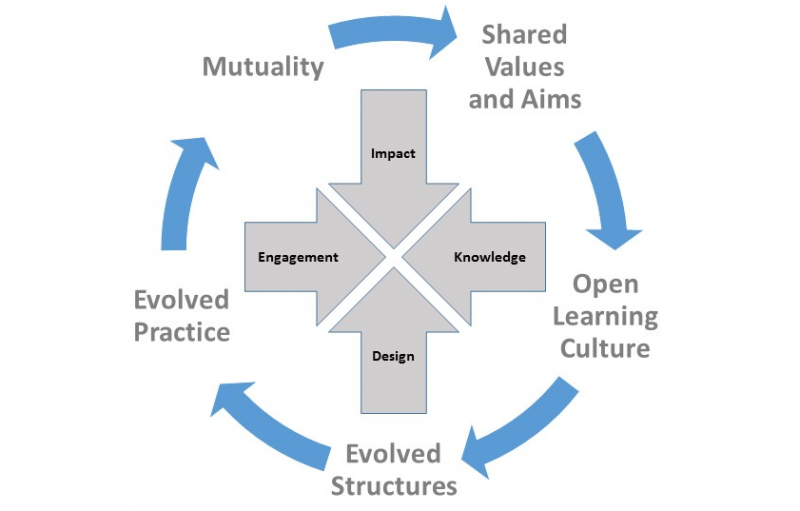How can social and cultural leaders make the most of each other’s knowledge and change lives for the better? Researcher Jeanette Burnett has been finding out.

Leticia Valverdes
I have worked in both the cultural and social sectors. After working in dance management for many years I moved into social policy-making when the opportunity to lead a Big Dance legacy project opened the door to evidence-based social policy.
Compatibility and communication quickly emerged as important themes in the project
This experience served as a backdrop for Beautiful Change, a research project exploring what cultural and social leaders learn when they work together, supported by the Clore Leadership Programme and the Arts and Humanities Research Council. Supervised by De Montfort University, my research was underpinned by a literature review and focused on the following three case studies.
Three case studies
- Islington Council, All Change Arts and a Sure Start children’s centre developed the Inspire! programme to offer a tailored support package to young parents and parents-to-be aged between fourteen and nineteen. The curricular programme mixes accredited creative projects with advice, guidance and personal development. It has been running for 13 years, 80% of participants go on to full-time education or employment, and it is now coordinated by a former participant.
- Chelsea Academy and Impact Dance began their partnership following an arts immersion day. Over the last seven years the partnership has been developed to include work experience placements for Chelsea Academy students with Impact Dance, a series of workshops targeting disaffected boys in the special needs department, and opportunities for students to work with Royal Ballet School teachers and students, including a performance at Covent Garden.
- Catherine Paskell and Mark Richardson have worked together to set up the Social Enterprise Academy in Wales. They are pooling their expertise from the social and cultural sectors respectively to support both sectors in re-thinking their business models and developing the skills they need to sustain their work. Their work training cultural and social leaders is addressing the gap in business skills common to both sectors.
Compatibility and communication quickly emerged as important themes in the project. Compatibility was discussed in terms of the extent to which partners were able to identify complementary aims and approaches to work.
Much of the discussion centred on the need to understand organisational difference and learn how to work in unfamiliar settings. For example, a small performance company faced with the complexity of large international development agencies, or a contemporary art practice working with a social housing association. Much of this depended on partners working hard at communication – learning each other’s language, demystifying jargon and taking time to listen well.
A framework for sharing knowledge

I developed the Beautiful Change framework to capture the key features I observed in ‘live’ partnerships. These features are: mutuality; shared aims and values; an open learning culture; willingness to evolve or adapt structures; and opportunities to evolve practice.
This framework offers an open space for conversation about how social and cultural leaders can better understand our combined knowledge, the understanding we find at the intersection between social and cultural change, and how this can be applied to the work we do every day.
My research has echoed the idea put forward by the King’s College Cultural Institute enquiry, The Art of Partnering, that both equity and transparency are core features of a healthy partnership. The term that recurred in my conversations that seemed to capture both these ideas was mutuality. Particularly when working across organisational boundaries with different structures, hierarchies and approaches to sharing power, different kinds of expertise should be given equal weighting. By doing so, partners will begin to make more of the territory they share.
The territory I refer to above would be best defined in terms of the values and aims that the partners have in common. Once again, this is a reframing of the discussion in the King’s enquiry. Within this context, we see the inner section of the model emerging – how might shared values and aims across social and cultural boundaries be defined in the way our practice is designed, and our approach to engagement, knowledge management and measuring impact?
Further, how can we develop a learning culture that is open enough to offer real opportunities to evolve our structures and practices so we can have a deeper and wider impact in our rapidly changing world?
As the project evolves, I hope more social and cultural leaders will take time to think about how we can make the most of each other’s knowledge so we all get better at changing lives for the better. There’s also a role for funders and policy-makers in facilitating more joint working.
Jeanette Burnett is a Senior Communities and Social Policy Officer for Greater London Authority and Project Director for Beautiful Change.
beautifulchangeproject.wordpress.com




